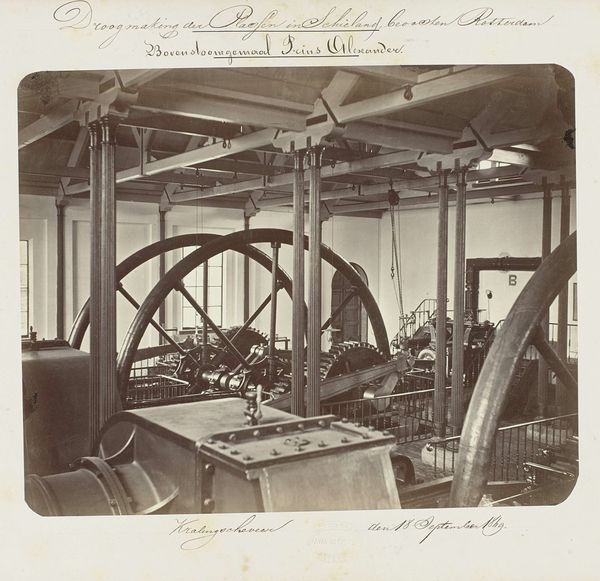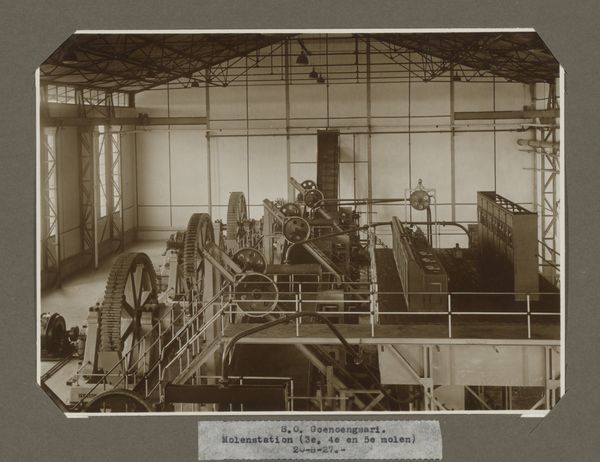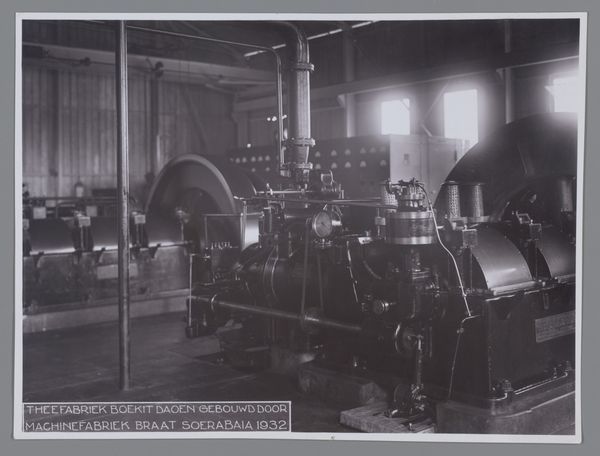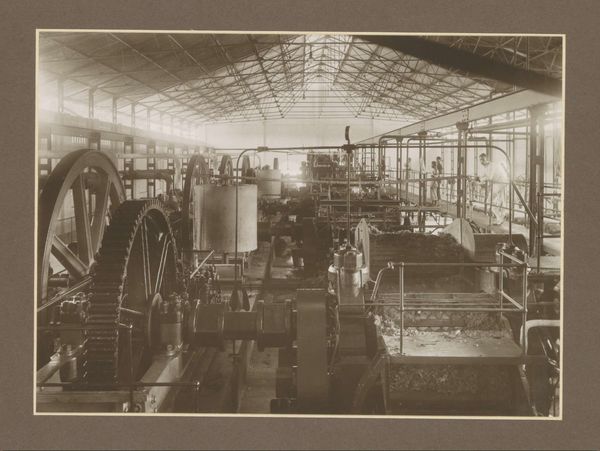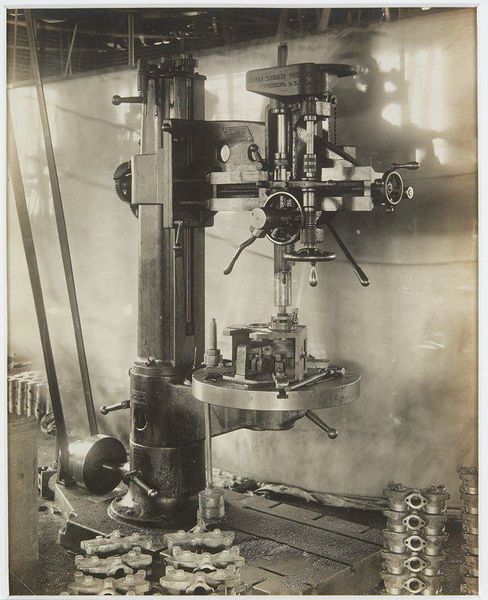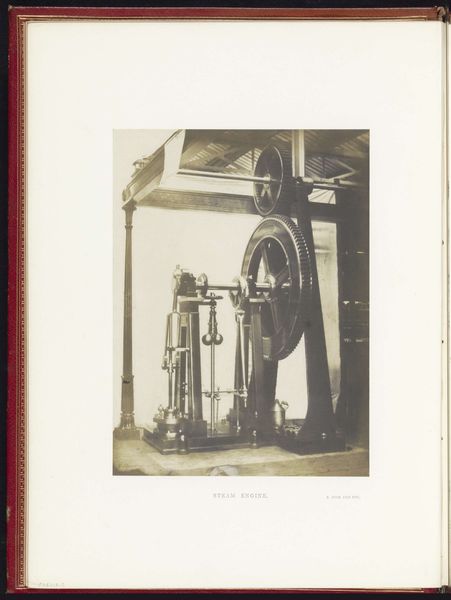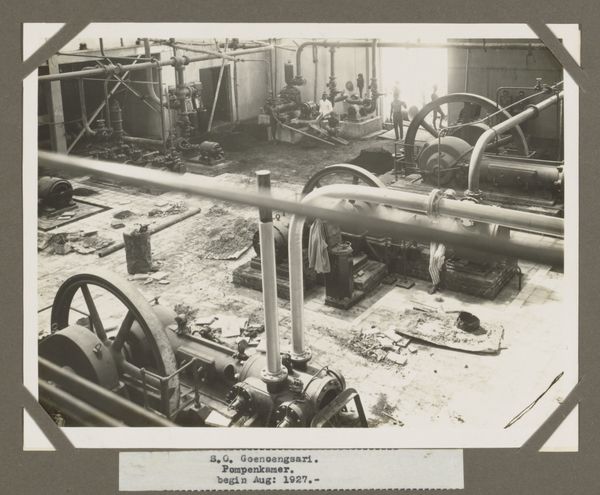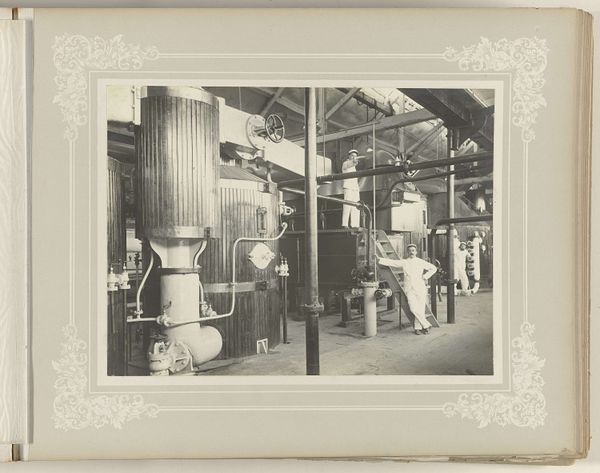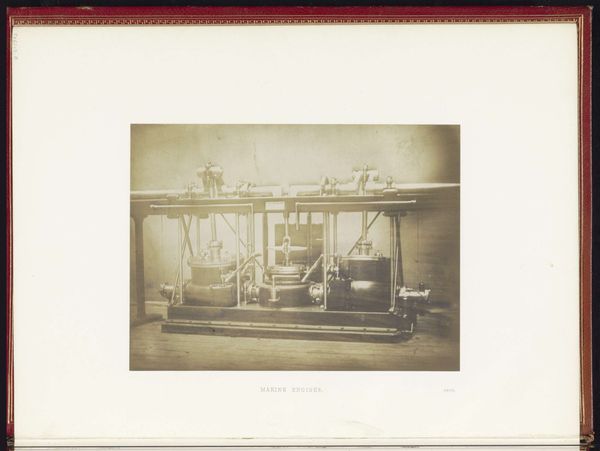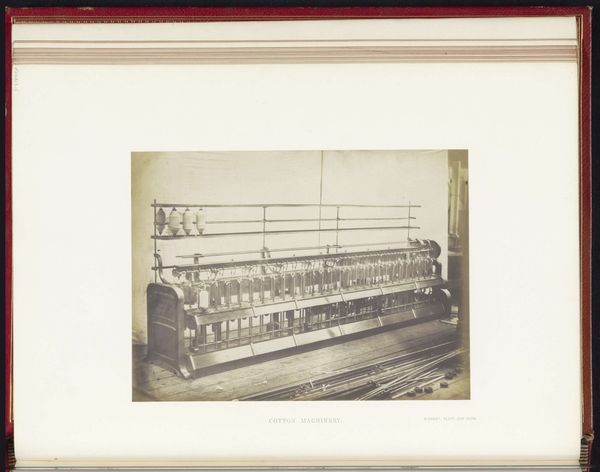
photography, gelatin-silver-print
#
landscape
#
archive photography
#
photography
#
historical photography
#
gelatin-silver-print
#
19th century
Dimensions: height 32.3 cm, width 47.2 cm
Copyright: Rijks Museum: Open Domain
This photograph, captured by Jacobus van Gorkom Jr. in September 1869, portrays the lower screw-driven pumping station at Capelle aan den IJssel. The dominant feature, the screw, is a symbol of progress, efficiency, and human intervention in the natural world. The screw, or helix, is a powerful form. Think of the ancient world's fascination with spirals, seen in labyrinths or the winding snakes of the Caduceus. Here, the industrial screw takes on a new purpose: not of healing or mystery, but of harnessing nature. It recalls the same vital energy, now channeled into the practical task of controlling water. Consider the psychological impact of this machine. Does it evoke a sense of control, or perhaps a deeper anxiety about humanity's relationship with nature? The onward push of the machine, endlessly forward, recalls a deep unease. The screw, evolving from ancient symbol to industrial tool, continues to resurface, demonstrating its cyclical journey through history, adapting its meaning with each new context.
Comments
rijksmuseum about 2 years ago
⋮
These iron machines were marvels of modern technology in their day, and made it possible to drain and keep Holland’s polders dry. The machines are presented as showpieces in these government-commissioned photos. To drain the lakes east of Rotterdam, engineers dug a canal and a peripheral waterway to flush away the water. Then they extracted the water with pumps at Kralingen, Capelle and Nieuwerkerk.
Join the conversation
Join millions of artists and users on Artera today and experience the ultimate creative platform.
